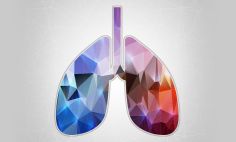Asthma is now the most common chronic disorder in childhood. In the U.S., nearly 24 million people have asthma. Asthma often occurs early in life, but it can also occur for the first time in adulthood. Some patients can also "outgrow" asthma at first, but then develop symptoms again later in life.
What is asthma?
Asthma is an inflammatory disease of the lung. It can occur along the entire airway from the nose to the lung. Once the airway becomes swollen and inflamed, it becomes narrower, and less air gets through to the lung tissue. The exact cause of asthma is not known. Researchers think some genetic and environmental factors interact to cause asthma, usually before the age of 5.
What are the symptoms of asthma?
Wheezing, coughing, chest tightness, and trouble breathing. During an asthma attack, the muscles around the airways tighten up, more mucus is produced, and asthma symptoms become worse.
Are allergies related to asthma?
Yes. Asthma can be triggered by substances in the environment called allergens. Some indoor allergens come from dust mites, cockroaches, dogs, cats, rodents, molds, and fungi. Outdoor allergens include pollen from many trees, weeds, and grass. Even food allergies can cause asthma symptoms.
What about air pollution outside?
Outdoor pollution plays a major role, as does cigarette smoke. Children exposed to pollution are more likely to develop asthma. Asthma patients are more likely to have their asthma flare up when they are exposed to pollution. This is why asthma patients should not exercise outdoors during high-pollution days, for example when there is a code-orange ozone day.
How is asthma treated?
Treatment plans can include taking prescribed medicine and avoiding your asthma triggers. You can breathe in some medicines and take other medicines as a pill. Asthma medicines come in two types—quick-relief and long-term control. Quick-relief medicines control the symptoms of an asthma attack. Long-term control medicines help you have fewer and milder attacks, but they don't help during an asthma attack.
Indoor Allergens & Asthma
What steps can you take to reduce indoor allergens and prevent asthma attacks?
- Vacuum carpets and upholstered furniture every week.
- Reduce humidity to under 50% and check for leaks/water damage to reduce mold.
- Eliminate pest infestations to reduce cockroach or mouse allergen exposure.
- Use HEPA air filtration devices to reduce airborne allergens. Change HVAC filters at least once every quarter, or more frequently if your home has a lot of dust.
- Wash sheets and blankets in hot water every week.
- Put mattresses, pillows, and box springs in allergen-proof covers.
- Limit dog and cat exposure in the home.







